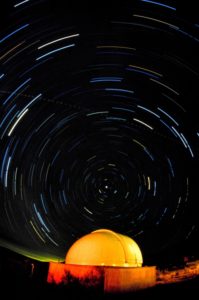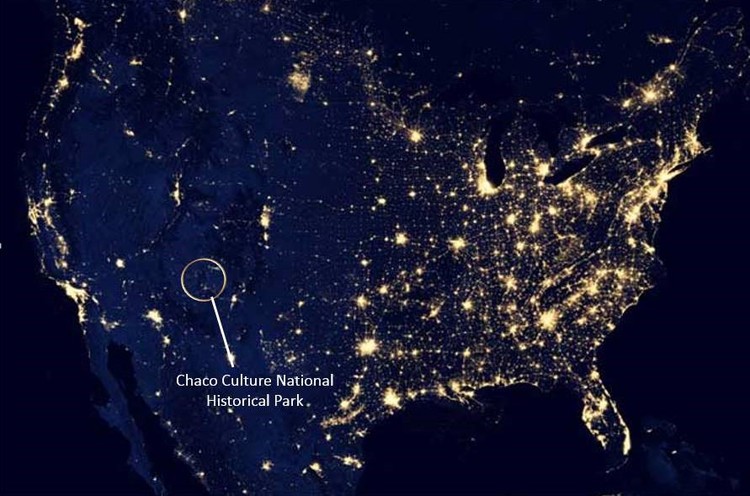
Greater Chaco’s night skies are among the darkest in the entire country, and have changed little in the centuries since the Chacoan people settled in the canyon. Countless great houses, cultural resources and traditional properties within Greater Chaco are modeled after celestial events and astronomical phenomena observed more than a thousand years ago by the residents of Greater Chaco. Indeed, Chacoans cannot be fully understood without recognizing and accounting for their deep comprehension and understanding of astronomy. Their acute and precise astronomical observations were, in turn, made possible by the outstanding darkness and clarity of the night skies in Greater Chaco.
The influence of astronomy on the ancient civilizations of Greater Chaco cannot be understated. Even a thousand years ago, the night skies in Chaco Canyon were uniquely dark and clear, and the canyon provided an ideal venue for stargazing and astronomical study. Numerous structures, or “great houses,” within Greater Chaco are oriented to, and even interact with, a variety of astronomical phenomena. Great houses and other structures frequently include features that mark solstices, equinoxes and celestial events. The ancient roads, too, built remarkably wide, level and straight, are often connected to the great houses in astronomical alignments.
While many of the ancient structures and roads have been damaged or eroded over the past millennium, the astronomical configurations that inspired them remain largely the same today. And, remarkably, despite encroaching urbanization and energy projects, the outstanding darkness and clarity of the night sky within Greater Chaco has been mostly preserved. This immaculate (and increasingly rare) state of preservation was recognized in 2013, when Chaco Culture National Historical Park was named an International Dark Sky Park. Thus, a thousand years later, the celestial blueprint that inspired the ancient architecture of Greater Chaco can still be clearly observed.
